
What to see in kefalonia
Melissani Lake
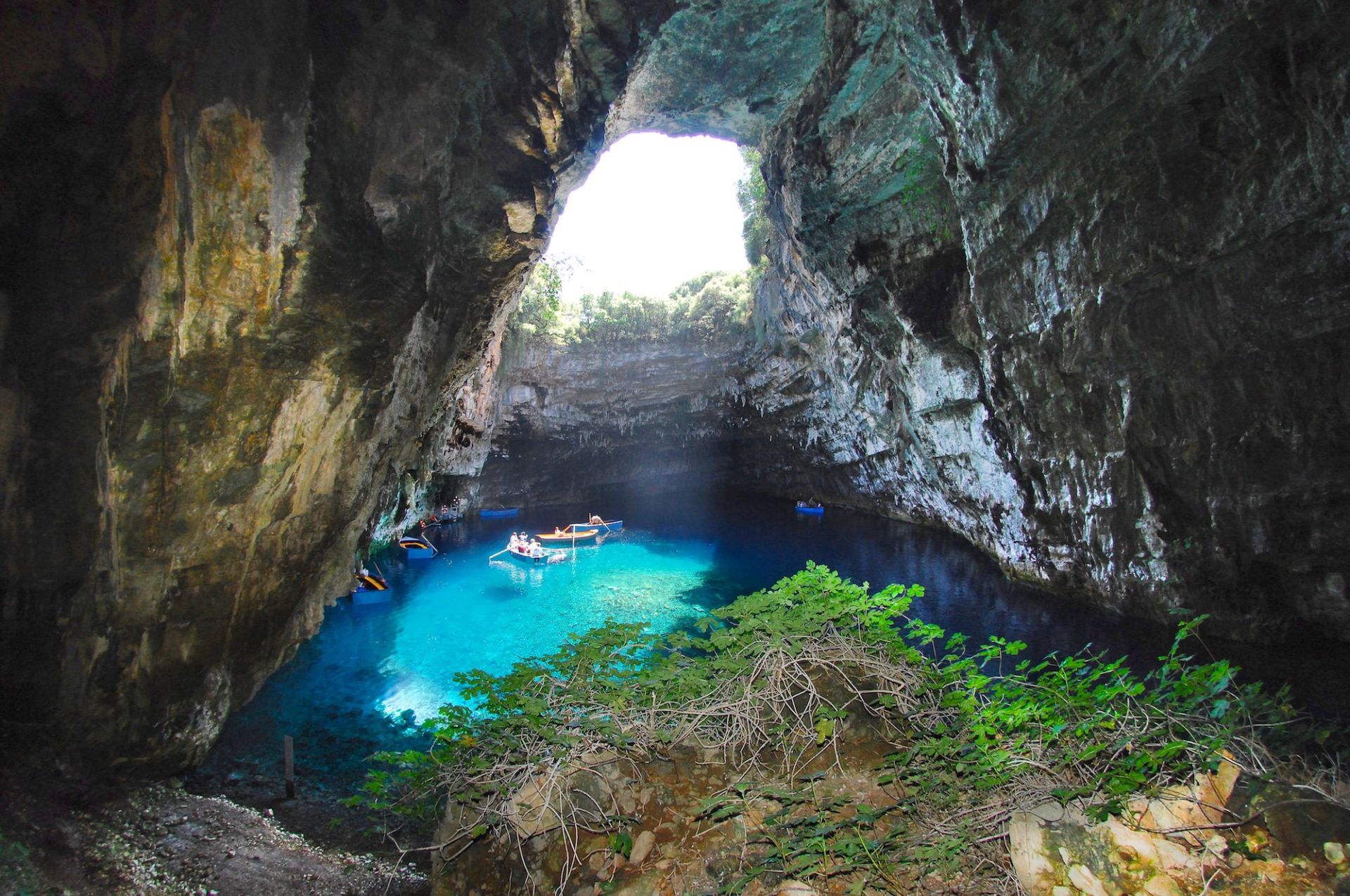
Melissani Lake
Melissani Lake is one of the most popular and beautiful sightseeing in Kefalonia. It is located in Sami area near Karavomylos. From the water erosion in the walls, it is believed the cave is over 20.000years old. However, it was discovered in 1951.
The cave has the shape of a B, with two big water filled halls and an island in the middle. The first hall has a big oval opening to the surface, letting the light shine in the crystal blue water, showering the cave with different colors depending on the time of day. The water is so clear that the boats look like they are floating on air.
According to mythology, the lake is named after nymph Mellisanthe who committed suicide because god Panas denied her love. Even the dolphins that carried the messages to her beloved, turned into stones from their grief.
Melissani is a unique geological phenomenon; north from Argostoli is a place called Katavothres, which means swallow holes. Sea water flows into these holes and disappears in the ground. For a long time, people had tried to figure out where the seawater flows to until in 1963 Austrian geologists found out by pouring dye into the water, that the sea water which disappears in the ground, crosses the island underground and reappears after 14 days on the other side of the island, flowing through lake Melissani at one meter above sea level and from there back into the sea.
Visit Melissani to feel the magic of the nature. Explore the lake in the boats and ask the drivers to tell its story and show you the petrified dolphins. Undoubtedly it’s stunning beauty will take your breath away!
Drogarati Cave
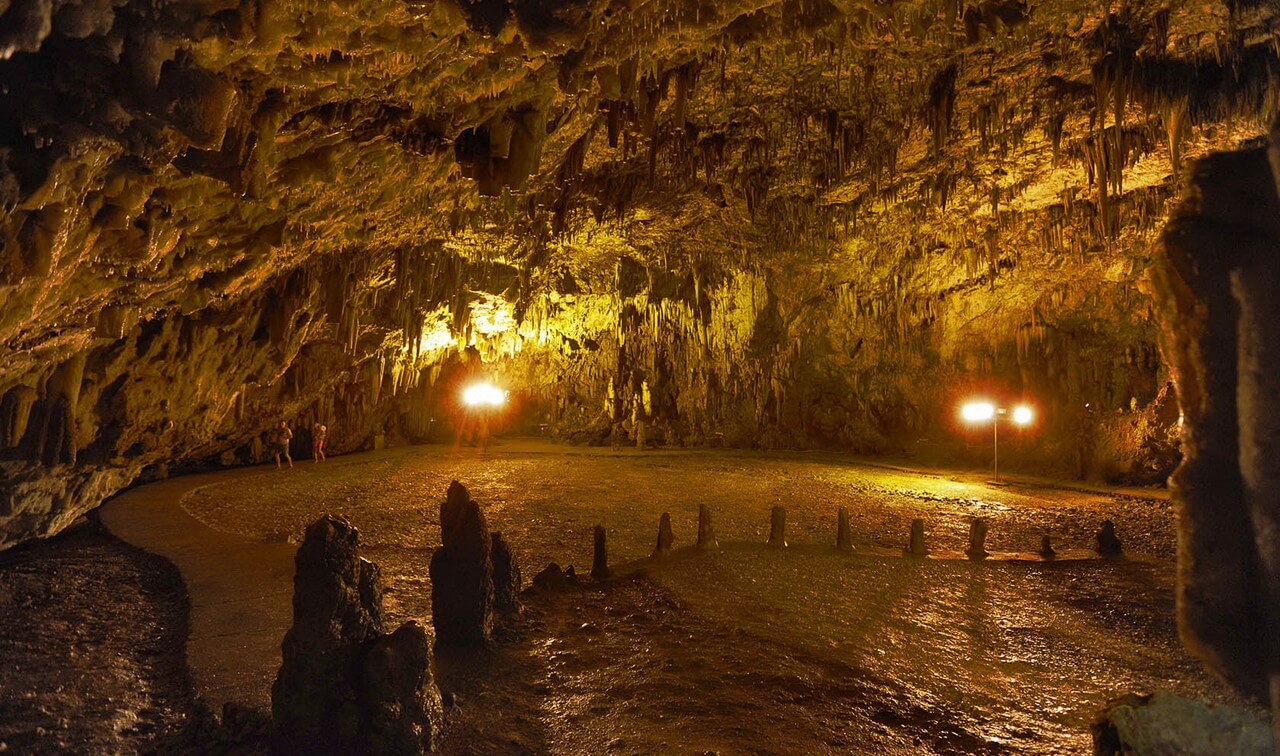
Drogarati Cave
Drogarati, located in Sami area, is a cave found 300 years ago, when a part of it was destroyed because of a strong earthquake and so the entrance was created. It was opened to the public in 1963. It’s got many stalactites and stalagmites created from the rain, which comes through the rocky level of the cave.
Speleologists say that this cave is about 150 million years old and consists of two parts. The part accessible to people consists of a long corridor that leads to a natural platform of stalactites that beautifully reflect the light. Drogarati cave is sometimes used to host cultural events due to its great acoustics and has a room for 500 people. Scientists have discovered that the cave has an extension that is not reachable and believes that, through this extension, it is connected to other sea caves.
Make a stop in Drogarati Cave to admire rain’s creations on the rocks. Stand on the middle of the big chamber and sing. Let your voice spread around the cave and hear the echo. Allow yourself to live the moment…
Assos
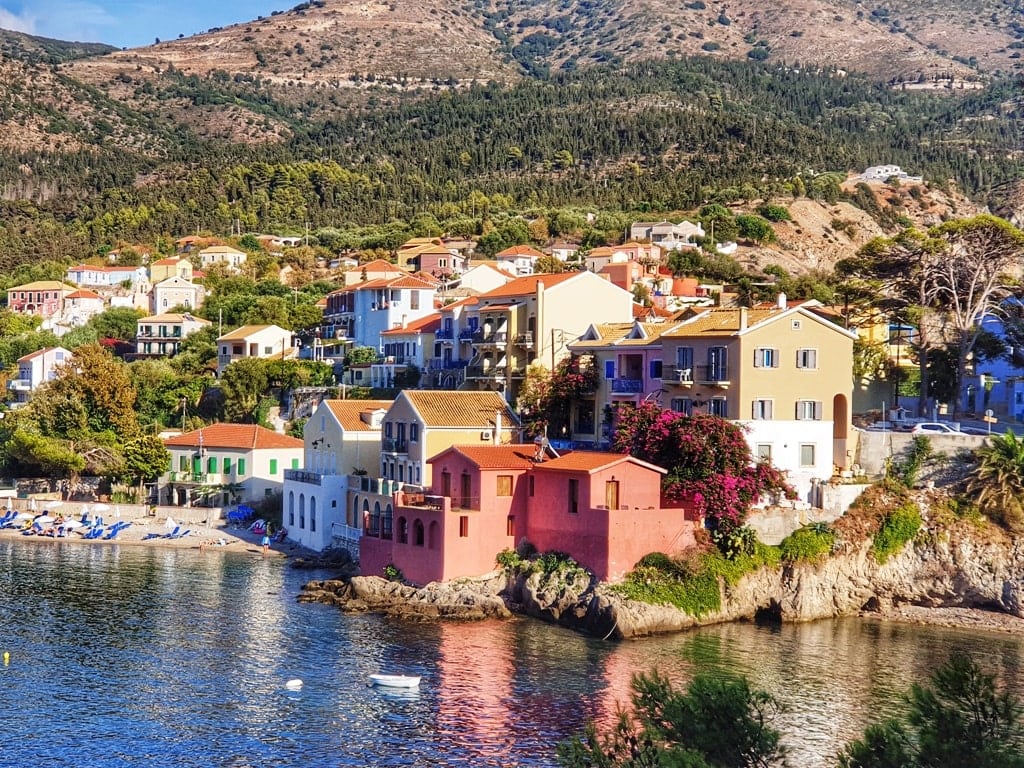
Assos
A small picturesque village at the north of Kefalonia.
Traditional houses with balconies in several vivid colors, flowers spread all over the alleys and yards, white pebbles at the beach along with clear blue waters and green scenery create this magnificent landscape.
The peninsula of Assos has double peak with an altitude of 154 meters, on which was built during the Venetian period the Castle of Assos and steep vertical cliffs that drop to the sea, especially those located in the back, towards the sea. On the opposite coast of the island is formed a bay that home the sheltered harbor of Assos.
Make a stop on the top of the road and indulge the spectacular view!
The castle of Assos
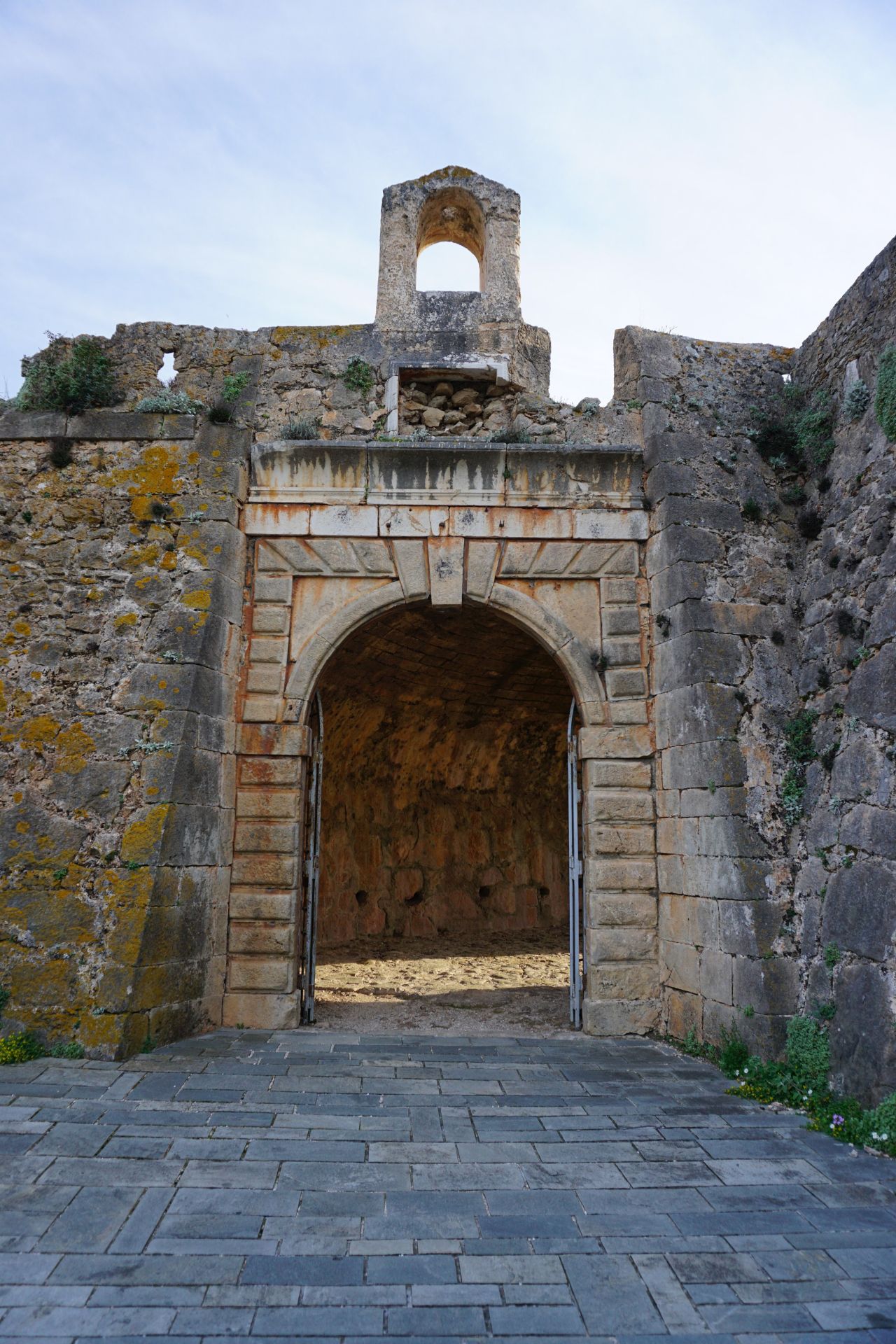
The castle of Assos
The castle of Assos, built in the 16th century by the Venetians ,is a fine example of military architecture of the island (British general Charles James Napier described it as ‘stronger than Gibraltar’) It overlooks the bay of Agia Kyriaki, and could act as a base from which to defend the island and to protect against pirates. The castle stands on the top of a 170 m high rocky hill, which encompasses the entire peninsula of Assos. The castle is protected by a wall of 2000 meters length, and covers an area of 44,000 sq. meters.
The construction started in 1593 and the fortifications were completed by 1596. The Venetians wanted to found a new powerful fortress-state, but this did not happen. The castle did not attract the local population and, moreover, in 1684, the Venetians achieved to take Lefkas from the Turks and the Assos castle lost its strategic importance.
Assos remained a huge fort with a tiny settlement inside. Inevitably, the grander city plans were scaled down and Assos became the capital of the northern part of Kefalonia. Nevertheless it is one of the largest castles in Greece.
Within the ruins, the guest can find the remains of the prison yard and cells which are still intact in the centre of the fortress as well as the small church of Agios (Saint) Markos and the house of the Venetian High Commissioner. A little lower down the hill there is another chapel dedicated to Prophet Elias, which contains a beautiful wooden carved iconostasis. Two of the castle’s original four gates are still standing. The main gate is the most interesting part of the castle.
Visit the castle and admire vastness of the sea.
The Castle of Saint George
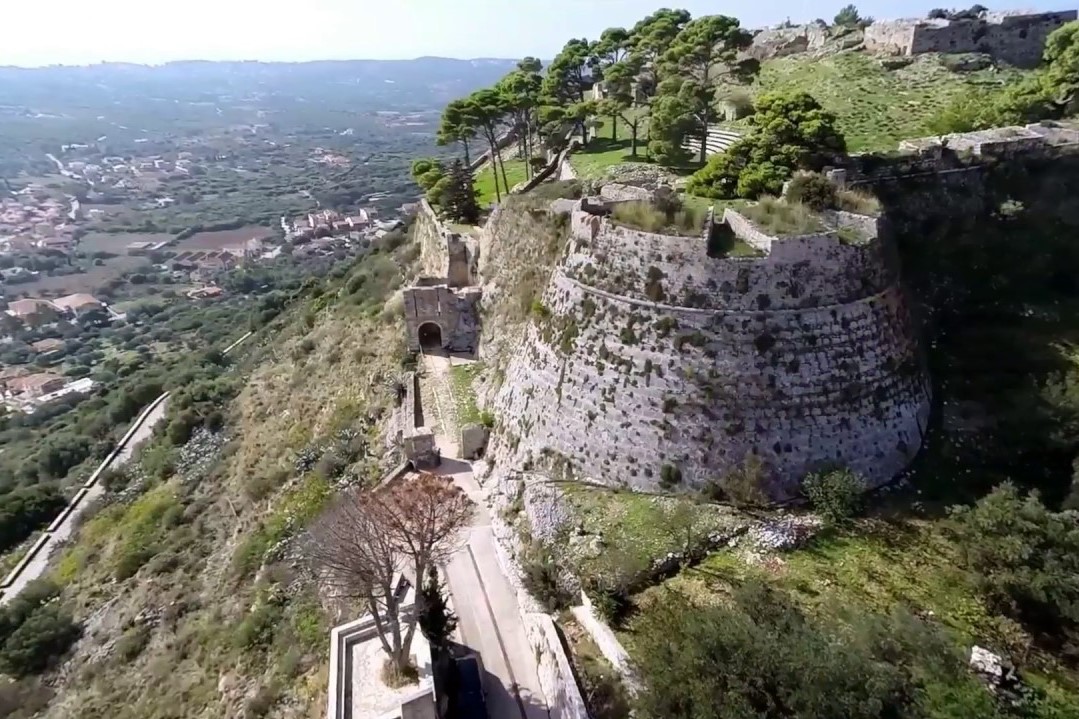
The Castle of Saint George
The Castle of Saint George is located 7 km south east of Argostoli, above the village Peratata. It has a polygonal shape and covers an area of 16,000 sq. m. This Castle was originally built in the 12th century by the Byzantines, and was completed by the Venetians in 1545. It was the economic, cultural and administrative center of the island until the 18th century.
Inside the Castle, there were residences, public buildings, storehouses with food and guns, churches, hospitals, prisons and cisterns of water. In fact, this Castle was the capital of Kefalonia before Argostoli was made the new capital in 1757.
The road leading to Argostoli from the castle was named Strata Communa and runs behind the hill which was planned to ensure that it would not be seen by passing ships.
Today it is ruined and only a few buildings survived. It was not only the time and wars that caused its damages. This castle also suffered a lot from the two devastating earthquakes of the 17th century and the one of 1953 which caused extensive damage to the castle’s fortifications and buildings.
There are three main bastions with one facing Argostoli, one facing the sea and the third facing the village at the entrance. The coats of arms of various ruling Venetian families can be found on the walls within the castle. Close to a small square in the castle, you will also see the ruins of the Catholic Church of Saint Nicholas.
Fiscardo
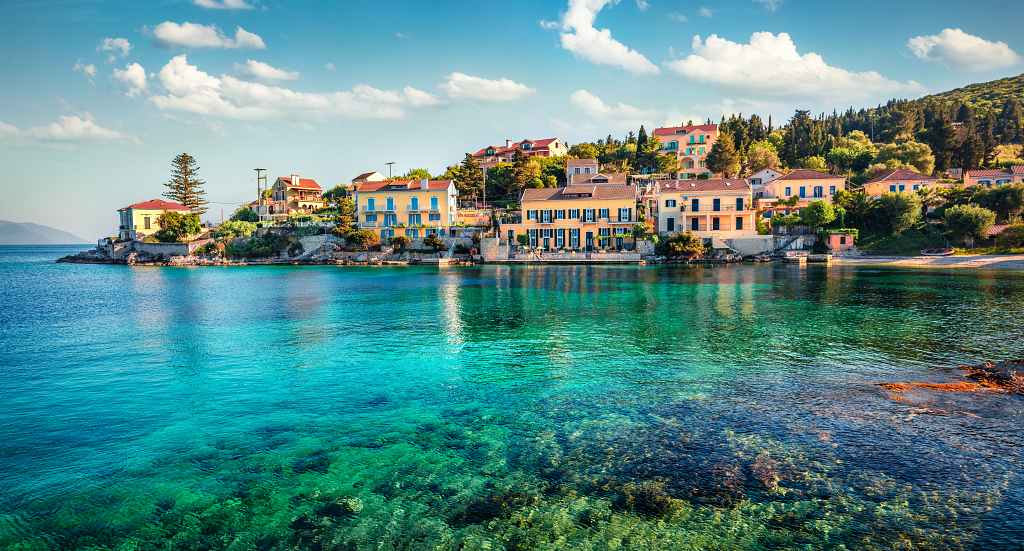
Fiscardo
A picturesque village on the northernmost side of Kefalonia. One of the most beautiful – and popular – parts of the island. A lovely bay- natural harbor, surrounded by lush greenery, Fiscardo is the only village surviving the severe earthquake that destroyed Kefalonia in August 1953. That is why Fiscardo still retains much of its original Venetian architecture, making it a really special place on the island to visit.
Colorful buildings, narrow alleys, variety of flowers and smells of the sea combined with local handmade sweets are what you will find in this unique destination.
